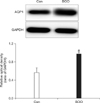1. de Groat WC. The urothelium in overactive bladder: passive bystander or active participant? Urology. 2004. 64:7–11.
2. Johnson JA, Cavert HM, Lifson N, Visscher MB. Permeability of the bladder to water studied by means of isotropes. Am J Physiol. 1951. 165:87–92.
3. Levinsky NG, Berliner RW. Changes in composition of the urine in ureter and bladder at low urine flow. Am J Physiol. 1959. 196:549–553.
4. Nelson RA, Jones JD, Wahner HW, McGill DB, Code CF. Nitrogen metabolism in bears: urea metabolism in summer starvation and in winter sleep and role of urinary bladder in water and nitrogen conservation. Mayo Clin Proc. 1975. 50:141–146.
5. Negrete HO, Lavelle JP, Berg J, Lewis SA, Zeidel ML. Permeability properties of the intact mammalian bladder epithelium. Am J Physiol. 1996. 271:–F886. –F894.
6. Rapoport A, Nicholson TF, Yendt ER. Movement of electrolytes across the wall of the urinary bladder in dogs. Am J Physiol. 1960. 198:191–194.
7. Turnbull GJ, Fellows GJ. Permeability of the urinary bladder of the rabbit. Rev Eur Etud Clin Biol. 1972. 17:745–749.
8. Cross WR, Eardley I, Leese HJ, Southgate J. A biomimetic tissue from cultured normal human urothelial cells: analysis of physiological function. Am J Physiol Renal Physiol. 2005. 289:F459–F468.
9. Butler RJ, Holland P, Gasson S, Norfolk S, Houghton L, Penney M. Exploring potential mechanisms in alarm treatment for primary nocturnal enuresis. Scand J Urol Nephrol. 2007. 41:407–413.
10. Eaton DC. Intracellular sodium ion activity and sodium transport in rabbit urinary bladder. J Physiol. 1981. 316:527–544.
11. Smith PR, Mackler SA, Weiser PC, Brooker DR, Ahn YJ, Harte BJ, et al. Expression and localization of epithelial sodium channel in mammalian urinary bladder. Am J Physiol. 1998. 274:F91–F96.
12. Garty H, Palmer LG. Epithelial sodium channels: function, structure, and regulation. Physiol Rev. 1997. 77:359–396.
13. Spector DA, Wade JB, Dillow R, Steplock DA, Weinman EJ. Expression, localization, and regulation of aquaporin-1 to -3 in rat urothelia. Am J Physiol Renal Physiol. 2002. 282:F1034–F1042.
14. Rubenwolf PC, Georgopoulos NT, Clements LA, Feather S, Holland P, Thomas DF, et al. Expression and localization of aquaporin water channels in human urothelium in situ and in vitro. Eur Urol. 2009. 56:1013–1024.
15. Yool AJ, Weinstein AM. New roles for old holes: ion channel function in aquaporin-1. News Physiol Sci. 2002. 17:68–72.
16. Milsom I, Abrams P, Cardozo L, Roberts RG, Thüroff J, Wein AJ. How widespread are the symptoms of an overactive bladder and how are they managed? A population-based prevalence study. BJU Int. 2001. 87:760–766.
17. Steers WD, Creedon DJ, Tuttle JB. Immunity of nerve growth factor prevents afferent plasticity following urinary bladder hypertrophy. J Urol. 1996. 155:379–385.
18. Hohlbrugger G. The vesical blood-urine barrier: a relevant and dynamic interface between renal function and nervous bladder control. J Urol. 1995. 154:6–15.
19. Schmidt-Nielsen B. Excretion in mammals: role of the renal pelvis in the modification of the urinary concentration and composition. Fed Proc. 1977. 36:2493–2503.
20. Araki I, Du S, Kamiyama M, Mikami Y, Matsushita K, Komuro M, et al. Overexpression of epithelial sodium channels in epithelium of human urinary bladder with outlet obstruction. Urology. 2004. 64:1255–1260.
21. Agre P, Preston GM, Smith BL, Jung JS, Raina S, Moon C, et al. Aquaporin CHIP: the archetypal molecular water channel. Am J Physiol. 1993. 265:F463–F476.
22. Verkman AS. More than just water channels: unexpected cellular roles of aquaporins. J Cell Sci. 2005. 118:3225–3232.
23. Maeda Y, Smith BL, Agre P, Knepper MA. Quantification of Aquaporin-CHIP water channel protein in microdissected renal tubules by fluorescence-based ELISA. J Clin Invest. 1995. 95:422–428.
24. Gannon BJ, Carati CJ. Endothelial distribution of the membrane water channel molecule aquaporin-1: implications for tissue and lymph fluid physiology? Lymphat Res Biol. 2003. 1:55–66.
25. Gannon BJ, Warnes GM, Carati CJ, Verco CJ. Aquaporin-1 expression in visceral smooth muscle cells of female rat reproductive tract. J Smooth Muscle Res. 2000. 36:155–167.
26. Lu DY, Li Y, Bi ZW, Yu HM, Li XJ. Expression and immunohistochemical localization of aquaporin-1 in male reproductive organs of the mouse. Anat Histol Embryol. 2008. 37:1–8.
27. Sellars ME, Sidhu PS. Pictorial review: ultrasound appearances of the rete testis. Eur J Ultrasound. 2001. 14:115–120.
28. Zhou Q, Clarke L, Nie R, Carnes K, Lai LW, Lien YH, et al. Estrogen action and male fertility: roles of the sodium/hydrogen exchanger-3 and fluid reabsorption in reproductive tract function. Proc Natl Acad Sci USA. 2001. 98:14132–14137.








 PDF
PDF ePub
ePub Citation
Citation Print
Print



 XML Download
XML Download